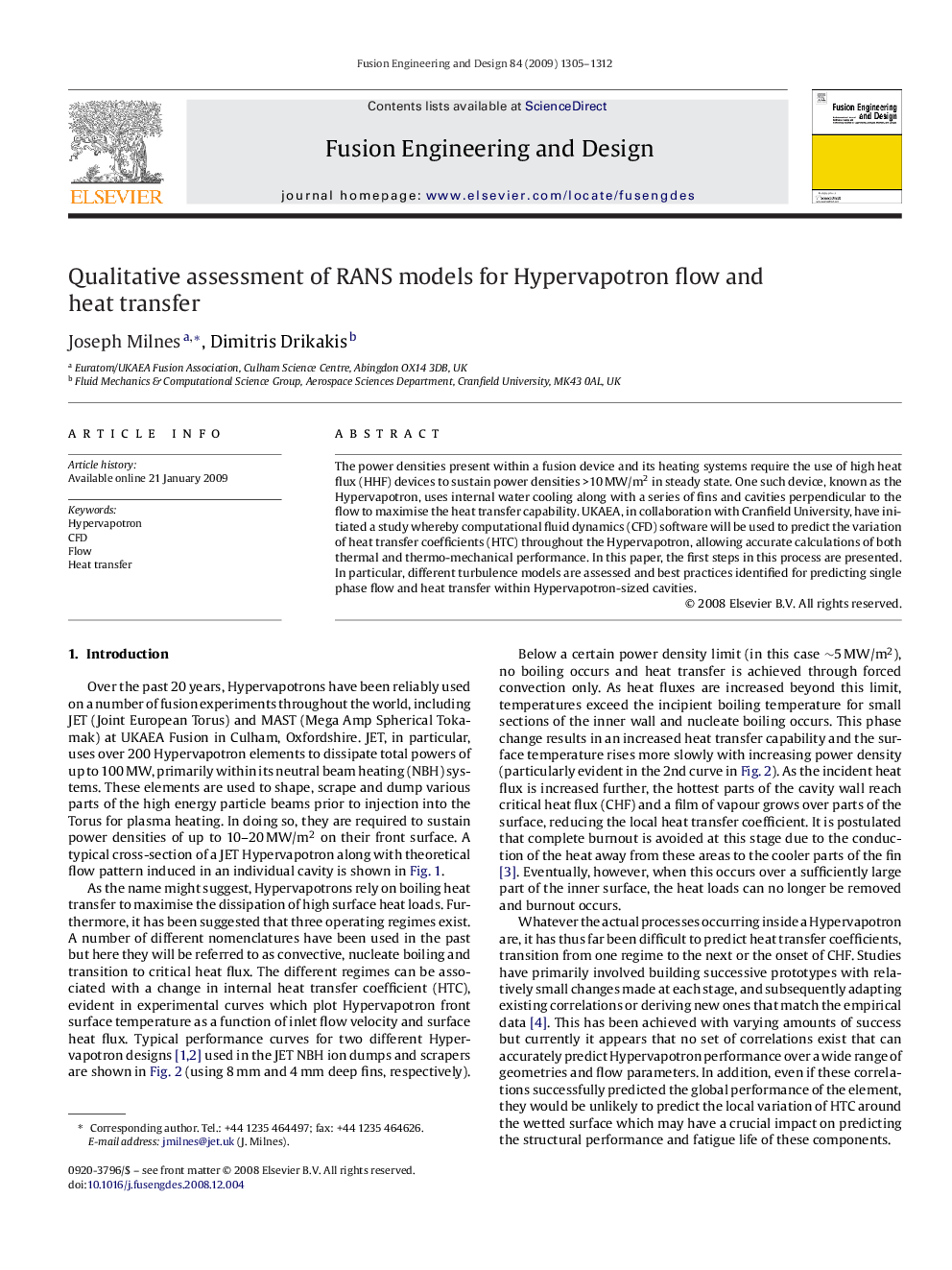| Article ID | Journal | Published Year | Pages | File Type |
|---|---|---|---|---|
| 273138 | Fusion Engineering and Design | 2009 | 8 Pages |
The power densities present within a fusion device and its heating systems require the use of high heat flux (HHF) devices to sustain power densities >10 MW/m2 in steady state. One such device, known as the Hypervapotron, uses internal water cooling along with a series of fins and cavities perpendicular to the flow to maximise the heat transfer capability. UKAEA, in collaboration with Cranfield University, have initiated a study whereby computational fluid dynamics (CFD) software will be used to predict the variation of heat transfer coefficients (HTC) throughout the Hypervapotron, allowing accurate calculations of both thermal and thermo-mechanical performance. In this paper, the first steps in this process are presented. In particular, different turbulence models are assessed and best practices identified for predicting single phase flow and heat transfer within Hypervapotron-sized cavities.
